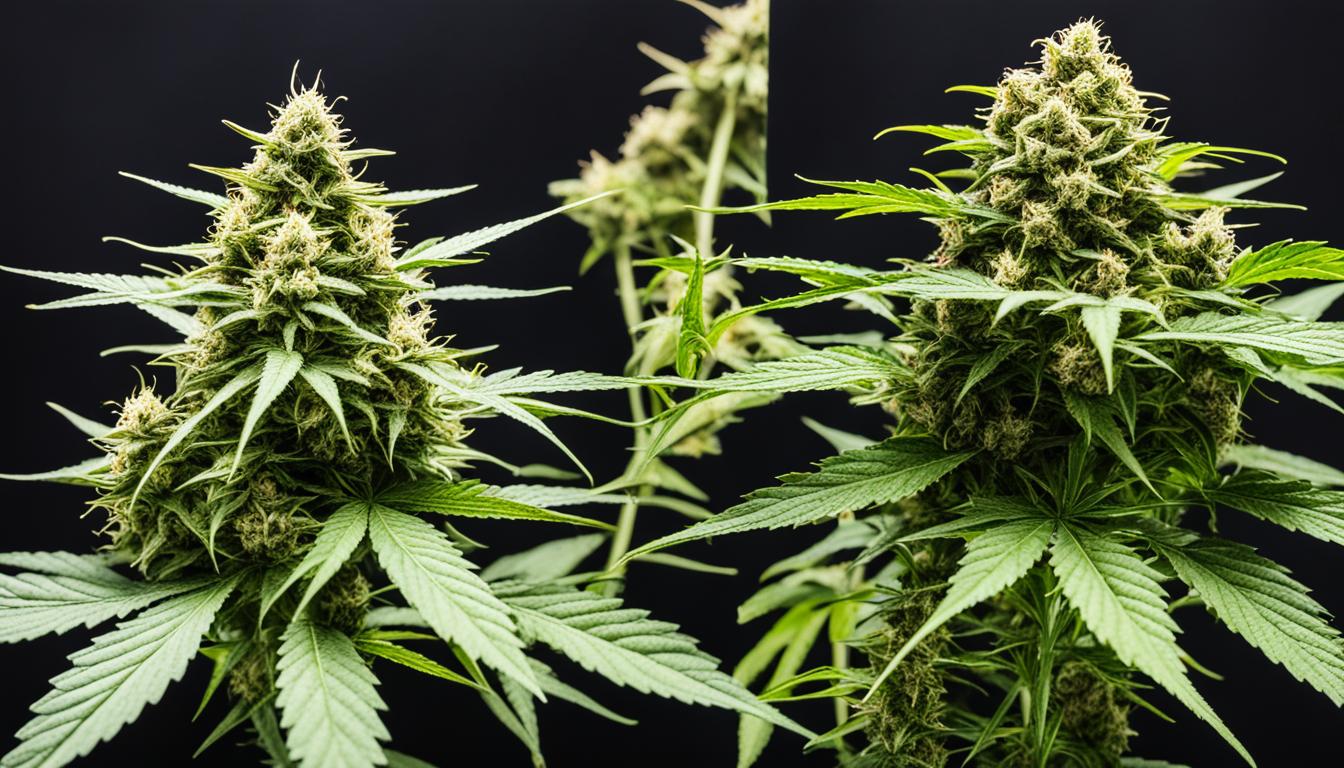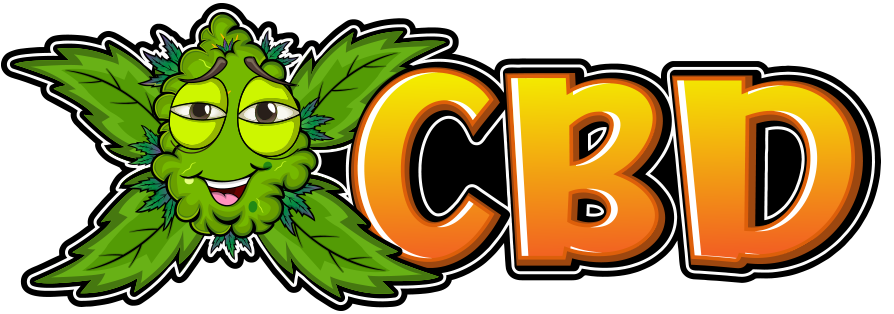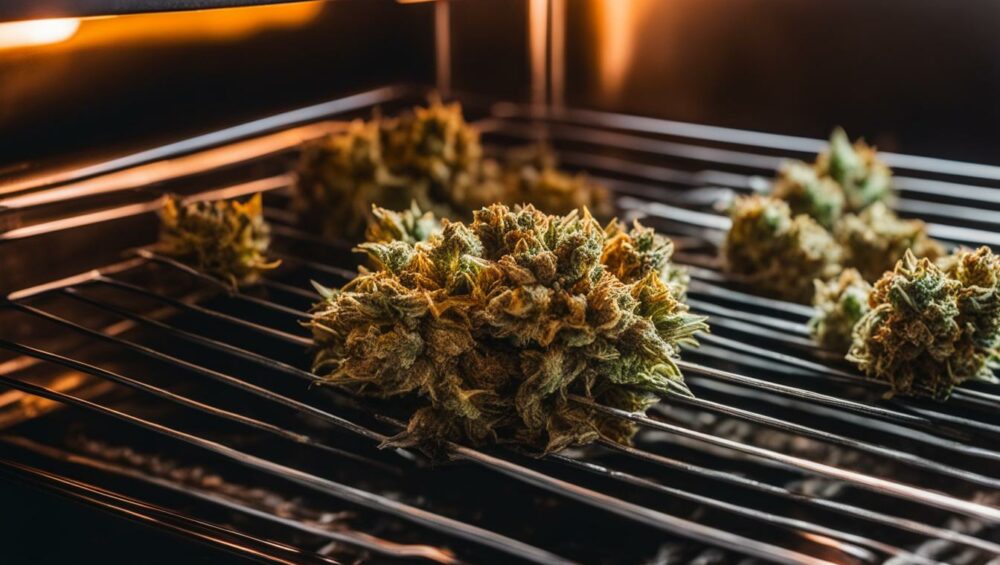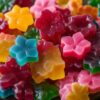Welcome to our comprehensive CBD flower guide, where we unravel the secrets to unlocking CBD potency through the process of decarboxylation. If you’re looking to maximize the therapeutic benefits of CBD, understanding the science behind decarboxylation is essential.
Decarboxylation is a crucial step in activating the cannabinoids present in CBD flower, ensuring that you experience the full potential of this natural compound. By subjecting the CBD flower to heat, the non-psychoactive cannabinoids are converted into their active forms, allowing your body to absorb them more effectively.
In this guide, we will explore what CBD hemp flower is and how it differs from marijuana. We’ll delve into the science behind decarboxylation and provide you with different methods to decarb CBD flower. Whether you’re new to CBD or a seasoned enthusiast, this guide will empower you to harness the true potency of CBD flower.
What is CBD Hemp Flower?
CBD hemp flower, also known as CBD buds, CBD flower, or hemp buds, refers to the flowers of female hemp plants that have been specially bred to contain high levels of CBD and low levels of THC. Unlike marijuana, CBD hemp flower is non-psychoactive, meaning it does not produce the “high” sensation typically associated with cannabis.
One of the main attractions of CBD hemp flower is its versatility. It can be consumed in various ways, including smoking, vaporizing, or used in homemade products such as edibles, creams, and oils. This makes it suitable for individuals seeking the potential benefits of CBD in different forms.
“CBD hemp flower is a natural and holistic alternative for individuals looking to incorporate CBD into their wellness routine. With its range of consumption options and minimal THC content, it provides a convenient and customizable experience.”
Additionally, CBD hemp flower is rich in cannabinoids, terpenes, and other beneficial compounds that work synergistically to enhance its potential benefits. These compounds interact with the body’s endocannabinoid system, which is responsible for regulating various physiological functions, such as mood, sleep, appetite, and pain perception.
When selecting CBD hemp flower, it’s essential to choose high-quality products from reputable sources. Look for lab-tested products that provide detailed information about the CBD and THC levels, as well as potential contaminants.
The Potential Benefits of CBD Hemp Flower:
- Promotes relaxation and stress relief
- Supports a balanced mood
- Aids in better sleep
- May alleviate discomfort and soreness
- Supports overall wellness and vitality
The Difference Between CBD Hemp Flower and Marijuana:
It’s crucial to understand that CBD hemp flower and marijuana are not the same. While both are derived from the cannabis plant, they have distinct differences:
| Criteria | CBD Hemp Flower | Marijuana |
|---|---|---|
| THC Content | Less than 0.3% THC (non-psychoactive) | Higher THC levels (psychoactive) |
| Legal Status | Legal in many countries and states | Illegal in some countries and states |
| Psychoactive Effects | Non-intoxicating | Produces a “high” sensation |
| Usage | Versatile – can be smoked, vaped, or used in various products | Typically smoked or vaped |
By understanding these distinctions, individuals can make informed decisions about incorporating CBD hemp flower into their wellness routines.
CBD Hemp Flower vs. Marijuana
When it comes to CBD hemp flower and marijuana, there are significant differences to consider. Understanding these differences is essential for making informed choices and embracing the benefits of CBD. Let’s take a closer look:
THC Content
One of the key distinctions between CBD hemp flower and marijuana lies in their THC content. CBD hemp flower contains minimal levels of THC, typically less than 0.3%. This low THC content ensures that CBD hemp flower is non-psychoactive, meaning it does not produce the “high” associated with marijuana. On the other hand, marijuana contains higher levels of THC, which is responsible for its psychoactive effects.
Legal Status
Another crucial difference is the legal status of CBD hemp flower and marijuana. CBD hemp flower is legal in many countries and states where it has been specifically regulated. This is because it contains low levels of THC and is classified as industrial hemp. In contrast, marijuana remains illegal in many places due to its higher THC content.
Effects
The effects of CBD hemp flower and marijuana also diverge significantly. Due to its low THC content, CBD hemp flower does not induce psychoactive effects or impair cognitive function. Instead, it offers a range of potential benefits, such as relaxation, stress relief, and enhancing overall well-being. Marijuana, with its higher THC content, can produce various psychoactive effects, including euphoria, altered perception, and impairment.
| CBD Hemp Flower | Marijuana | |
|---|---|---|
| THC Content | Less than 0.3% | Higher levels |
| Legal Status | Legal in many countries and states | Illegal in many places |
| Psychoactive Effects | Non-psychoactive | Produces psychoactive effects |
| Potential Benefits | Relaxation, stress relief, well-being | Varying psychoactive effects |
It is important to note that the choice between CBD hemp flower and marijuana ultimately depends on individual preferences and desired effects. Both options have their unique characteristics, and it is crucial to choose the one that aligns with your needs and priorities.

The Science Behind Decarboxylation
Decarboxylation is a crucial process in unlocking the full potential of cannabis for medicinal and recreational use. By applying heat, decarboxylation activates the cannabinoids present in cannabis, transforming their raw and inactive forms into compounds with powerful effects.
When cannabis is in its raw state, it contains THCA (tetrahydrocannabinolic acid) and CBDA (cannabidiolic acid), which are non-intoxicating and have limited therapeutic benefits. However, through decarboxylation, THCA is converted into THC (tetrahydrocannabinol), the psychoactive compound responsible for the euphoric effects of cannabis. Similarly, CBDA is converted into CBD (cannabidiol), a non-psychoactive compound associated with various therapeutic properties.
The process of decarboxylation involves applying controlled heat to cannabis flowers or extracts, which prompts a chemical reaction that removes a carboxyl group from the cannabinoid acids. This activation process frees up the cannabinoids, enabling them to bind with receptors in the body’s endocannabinoid system (ECS) and produce their desired effects.
To achieve effective decarboxylation, the optimal temperature range is around 240°F (115°C). This temperature range ensures that decarboxylation occurs without degrading the cannabinoids or causing them to burn.
Decarboxylation Process
The decarboxylation process follows a simple step-by-step procedure:
- Preheat the oven to 240°F (115°C) or use an alternative heat source such as a sous vide machine, microwave, or stovetop method.
- Break down the cannabis flowers or extract into smaller pieces to increase the surface area for even heating.
- Spread the cannabis evenly on a baking tray or on a heat-safe dish if using a different method.
- Place the tray or dish in the preheated oven, ensuring that the cannabis is exposed to the heat source.
- Bake for approximately 30 to 45 minutes. The precise duration depends on the quantity and moisture content of the cannabis being decarboxylated.
- During baking, monitor the cannabis closely to prevent it from becoming too hot or burning.
Once the decarboxylation process is complete, the now-activated cannabis can be used in various forms, including smoking, vaping, or infusing into oils, edibles, topicals, and other products. By understanding the science behind decarboxylation and following proper techniques, individuals can harness the full potential of cannabinoids and tailor their cannabis experience to their specific needs.
| Cannabinoid Acid | Decarboxylation Process | Resulting Compound |
|---|---|---|
| THCA | Heat application | THC (psychoactive) |
| CBDA | Heat application | CBD (non-psychoactive) |
How Long to Decarb CBD Flower?
When it comes to decarboxylating CBD flower, finding the right balance of time and temperature is essential to maximize the potency of your cannabinoids. The recommended timeframe for decarboxylation is between 30 to 45 minutes at a temperature of around 240°F (115°C). This duration ensures that the cannabinoids are activated without risking burning or degradation of the plant material.
However, it’s important to note that the optimal conditions may vary based on personal preferences and desired outcomes. Some individuals prefer a shorter decarboxylation time to preserve the freshness and natural aroma of the CBD flower, while others may choose a longer duration to enhance the potency.
Ultimately, the goal is to decarb the CBD flower at a temperature and time that activates the cannabinoids without sacrificing their quality. Whether you’re seeking a mild effect or a more potent experience, experimenting with different decarboxylation times and temperatures can help you find the optimal conditions that suit your needs.
The Role of Temperature and Time
Temperature and time play crucial roles in the decarboxylation process. The heat applied to the CBD flower activates the cannabinoids and converts the inactive forms, such as THCA and CBDA, into THC and CBD. By carefully controlling the temperature and time, you can ensure that you’re getting the most out of your decarboxylation process.
“Decarboxylation is a delicate process that requires precision to achieve the desired results. It’s important to find the right balance of temperature and time to unlock the full potential of CBD flower.”
– Dr. Emily Wilson, Cannabis Scientist
Higher temperatures can accelerate the decarboxylation process, but they also increase the risk of degrading the cannabinoids. Lower temperatures, on the other hand, may require longer decarboxylation times to achieve the same level of activation.
Here’s a table summarizing the recommended temperature and time for decarboxylation:
| Temperature (°F) | Time (minutes) |
|---|---|
| 240 | 30-45 |
Remember, these recommendations serve as a starting point, and you can adjust the temperature and time based on your preferences. It’s always a good idea to experiment and find the perfect decarboxylation conditions that suit your desired outcome.
In the next section, we’ll explore different methods of decarboxylation to provide you with a range of options to choose from.
Different Methods of Decarboxylation
When it comes to decarboxylating CBD flower, there are several methods you can choose from, depending on your preferences and the equipment you have available. These methods include oven decarb, microwave decarb, sous vide decarb, and infused oil method.
The oven decarb method is one of the most common and straightforward ways to decarboxylate CBD flower. Simply spread your flower evenly on a baking sheet and heat it in the oven at a specific temperature for a set amount of time. This method allows for precise control over the temperature, ensuring optimal decarboxylation without overheating or burning.
Another option is the microwave decarb method, which can be a quick and convenient way to decarboxylate small amounts of CBD flower. Place your flower in a microwave-safe container, cover it loosely, and heat it in short intervals. This method requires careful monitoring to prevent overheating and ensure even decarboxylation.
If precision is your priority, the sous vide decarb method might be right for you. This method involves sealing your CBD flower in a vacuum-sealed bag and immersing it in a temperature-controlled water bath for an extended period. The sous vide method allows for consistent temperature control, resulting in efficient decarboxylation.
For those who prefer a versatile option, the infused oil method combines decarboxylation with oil infusion. This method involves heating CBD flower in oil at a specific temperature for a set amount of time. The heat activates the cannabinoids while infusing them into the oil, creating a potent and versatile product that can be used in cooking or as a topical application.
FAQ
What is CBD hemp flower?
CBD hemp flower refers to the flowers of female hemp plants that have been specially bred to contain high levels of CBD and low levels of THC. It can be smoked, vaped, or used in various homemade products like edibles, creams, and oils.
How is CBD hemp flower different from marijuana?
CBD hemp flower and marijuana are not the same. CBD hemp flower contains minimal THC (less than 0.3%) and is non-psychoactive, while marijuana contains higher levels of THC and is psychoactive. CBD hemp flower is legal and does not produce the same effects as marijuana.
What is decarboxylation?
Decarboxylation is the process of heating cannabis to activate the cannabinoids. In its raw form, cannabis contains THCA and CBDA, which are converted into THC and CBD through decarboxylation.
How long should I decarb CBD flower?
The recommended time for decarboxylation of CBD flower is between 30 to 45 minutes at a temperature of around 240°F (115°C). This timeframe ensures that the cannabinoids are activated without burning or degrading them. However, the temperature and time can be adjusted based on personal preferences and desired outcomes.
What are the different methods of decarboxylation?
There are several methods for decarboxylating CBD flower, including using an oven, microwave, sous vide machine, or infused oil. Each method requires specific temperatures and times to achieve optimal results. The choice of method depends on personal preferences and the equipment available.







